PROTECT YOUR DNA WITH QUANTUM TECHNOLOGY
Orgo-Life the new way to the future Advertising by AdpathwayWith a colorful addition or two, it’s easy to refresh our containers for fall. Adding perennials that shine with autumnal color or cool-season annuals goes a long way toward reviving the hardworking potted arrangements of summer. They bring extended interest and an infusion of flowers and foliage for rewards all season.
Whether you’re doing a total container makeover or filling in weary, end-of-summer pots, fall-flowering specimens make striking accents or thrilling features. Selections that bridge late summer heat and frosty conditions bring lasting interest and also support pollinators like birds, honeybees, butterflies, and other beneficial insects.
The fall container refresh is a time to change up color schemes and play with texture and forms. The casual, artful charm of the season lends itself to layered compositions of edibles and ornamentals with natural embellishments.
Frost-tolerant annuals tuck in easily to planter pockets with lasting blooms. Perennials bring recurrent appeal for seasons to come, whether overwintering in the container or moving to the garden bed.
For perennials in pots that spend winter outdoors, a good rule of thumb is that they should be hardy to two zones colder than your own growing zone. Exposed to air temperatures, they lack the insulation of the surrounding soil mass. You can also overwinter them in a sheltered spot, like a garage or basement, or offer extra winter protection.
Black Pearl Ornamental Pepper

Black Pearl Ornamental Pepper Seeds
Favourite Blend French Marigold

Favourite Blend French Marigold Seeds
Magic Carpet Blend Snapdragon

Magic Carpet Blend Snapdragon Seeds
Aster
 These classic fall flowers add bright pops of color to pots.
These classic fall flowers add bright pops of color to pots. Asters are stars of the fall garden, putting on a showy display as other blooming plants begin to fade. A perennial that blends color in the seasonal transition with ecological benefits is a win for the display.
Aster, Greek for “star,” blooms in clusters of daisy-like flowers in blues, reds, pinks, and purples. Aster has small but abundant flowers, giving it a complete blanket of color.
Many asters are native to North America. The Symphiotrichum genus, among others, includes smooth, calico, heath, wood, and aromatic species. The range of asters means wide adaptivity and varying bloom times. This succession of blooms supports pollinators throughout the changing season.
In pots, asters make excellent accents and filler specimens. Increasingly, they’re becoming substitutes for the potted mum, with richer pollen and nectar and seasons of recurrent color. They also make beautiful cut flowers. Pair them with sedum, solidago, rudbeckia, and ornamental grasses for stunning late-season color and texture.
Goldenrod
 The flowers provide an instant fall refresh.
The flowers provide an instant fall refresh. Solidago is a striking companion to aster, both in bloom time and in contrasting color and form. Pair these two in a pot for an instant fall container refresh. With golden yellow upright bloom spikes, solidago supplies high color throughout the warm season.
Early fall’s moderate conditions show another flush of gold in September. Butterflies and moths flock to the bright, nectar and pollen-rich spires. They also draw a number of specialized bees.
Most goldenrods are native to North America and spread readily. To keep them in bounds, opt for a well-behaved variety like ‘Fireworks’ and ‘Baby Sun.’ These dwarf cultivars are stout with prolific, gently arching bloom spikes.
To prolong flowering and to prevent reseeding, deadhead aged blooms. Let some remain on the stem to go to seed as forage for birds.
Black-Eyed Susan
 Natives attract beneficial insects in fall.
Natives attract beneficial insects in fall. Black-eyed Susan, with its cheery golden ray flowers and chocolate button centers, blooms until frost. The North American prairie wildflower is long-blooming, cold-hardy, and withstands heat, humidity, and drought.
R. hirta ‘Indian Summer’ is an All-America Selections winner with broad yellow blooms. ‘Irish Eyes’ has fresh, light green centers. ‘American Gold Rush’ is compact with bright gold blossoms that crowd two-foot stems. All are great candidates to refresh fall containers.
Rudbeckia is low-maintenance. For quick fill to refresh fall pots, opt for nursery specimens. After flowering, leave stems intact to let seeds persist into winter as food for songbirds. The hollow stems, too, provide shelter for overwintering pollinators.
Violas
 These annuals thrive when temperatures cool in fall.
These annuals thrive when temperatures cool in fall. Violas and pansies are among the easiest cool-season annuals to nestle into pots and containers. They bring instant gratification and a continual show of color in rich hues from blue to scarlet.
As frost-tolerant annuals, they withstand cool temperatures (hardy to about 20°F or -5°C). They’ll appreciate cool days and nights below 75°F (24°C) to thrive.
Violas bring smaller bloom “faces” than pansies, and both are prime plants to refresh fall containers. Use them in numbers in containers for the most impact. Choose a single color or opt for pre-designed nursery mixes for complementary combinations. Violas and pansies are edible and make a lovely garnish in fall platters and desserts.
Swiss Chard
 Don’t forget to add edibles to your containers.
Don’t forget to add edibles to your containers. Swiss chard has the most tender, mildly flavored, color-rich leaves to enjoy as container embellishments and on the plate. The full, ruffled leaves become a lush filler with textural foliage and bright stems.
To bridge the ornamental and edible display, call on varieties like ‘Bright Lights’ and ‘Peppermint’ to feature brightly colored stems against deep green or purple leaves. ‘Celebration’ brings bold, multicolored stems and tender green leaves in rich shades.
Swiss chard is lively with favorite annuals like violas, snapdragons, and petunias. Sow seeds frequently for a continual supply of young, leafy greens for harvesting.
Chrysanthemum
 Mums are colorful fall garden staples.
Mums are colorful fall garden staples. A hallmark of autumn, chrysanthemums offer a blanket of pincushion blooms from late summer and early fall until heavy frost. Seasonal tones of scarlet, gold, orange, pink, or purple blooms make them perfect for the autumnal display.
Potted nursery mums transplanted to a pot with other seasonal plantings is a fast way to refresh fall containers in the spirit of the season. Look for perennial chrysanthemums (more available in spring at garden centers) for cold-hardy, color-rich selections. They grow vigorously all summer to set buds for the autumnal burst in a range of floral forms.
Easy-care chrysanthemums grow best in moist, organically rich soils. Check moisture levels for nursery potted mums regularly, as the full-sized selections can dry out in the late summer heat.
Marigolds
 Bright marigolds still thrive in mild fall weather.
Bright marigolds still thrive in mild fall weather. Marigolds are another staple of the fall garden, growing quickly from seed or nursery cell packs. They brighten potted arrangements and even bring a refreshing herbal fragrance. Blooming until frost, their ruffly pompons in bright yellow, gold, scarlet, and creamy white complement any seasonal composition.
Between French, Signet, African, and Mexican species, there’s a marigold for every sunny pot. Use the edible blooms to garnish salads and serving platters or dry them for teas. Pair them with ornamental peppers, especially those with dark foliage, for a rich contrast.
Ornamental Peppers
 These bright peppers add visual interest until frost.
These bright peppers add visual interest until frost. Ornamental peppers are easy annuals with high visual interest from shiny pops of color among dark purple and green leaves. From long, upright candles to glossy pearls, the peppers are flashes of fiery color or deep and dark in purple and mahogany shades.
Dwarf varieties can refresh fall containers and even overwinter indoors. Dark varieties like ‘Black Pearl’ and ‘Purple Flash’ add depth among other seasonal tones. ‘Candlelight’ has bundles of upright, slender tapers in green, orange, and red.
They’re eye-catching with marigolds, violas, and aster, and among gourds and pumpkins on the front porch or in the centerpiece.
Plectranthus
 These perennials thrive in shadier spots.
These perennials thrive in shadier spots. To refresh fall containers in shade, plectranthus is a standout. From September through November, rich bloom spikes in lilac and dark purple float above deep green leaves in loose spires.
The violet blooms stand out among muted autumnal hues like rust and gold. Pair them with coral bells in plum, peach, or chartreuse and purple ornamental peppers. Plectaranthus becomes the thriller specimen with its tall, airy spikes.
Plectranthus is a tender perennial to bring indoors in cold climates or to treat as an annual where not hardy. It’s worth the wait in summer to enjoy the spectacle come fall.
Ornamental Grasses
 Compact ornamental grasses are great for containers.
Compact ornamental grasses are great for containers.Ornamental grasses are quintessential statement pieces in their fall glory. They bring graceful movement with tall, feathery plumes and blades in varying widths and colors. After frost, the dried leaves and seedheads make a lasting focal point.
North American native species like switchgrass (Panicum virgatum), bluestem (Andropogon gerardii), and muhly (Muhlenbergia capillaris) and their cultivars make long-term, structural landscape additions when they outgrow the pot.
For a larger statement piece and annual planting, opt for ornamental millet ‘Purple Majesty.’ Millet is a grain that makes a striking container feature with a tall, stalky habit (similar to corn). ‘Purple Majesty’ is dramatic with dark purple leaves and seeds.
Sedum
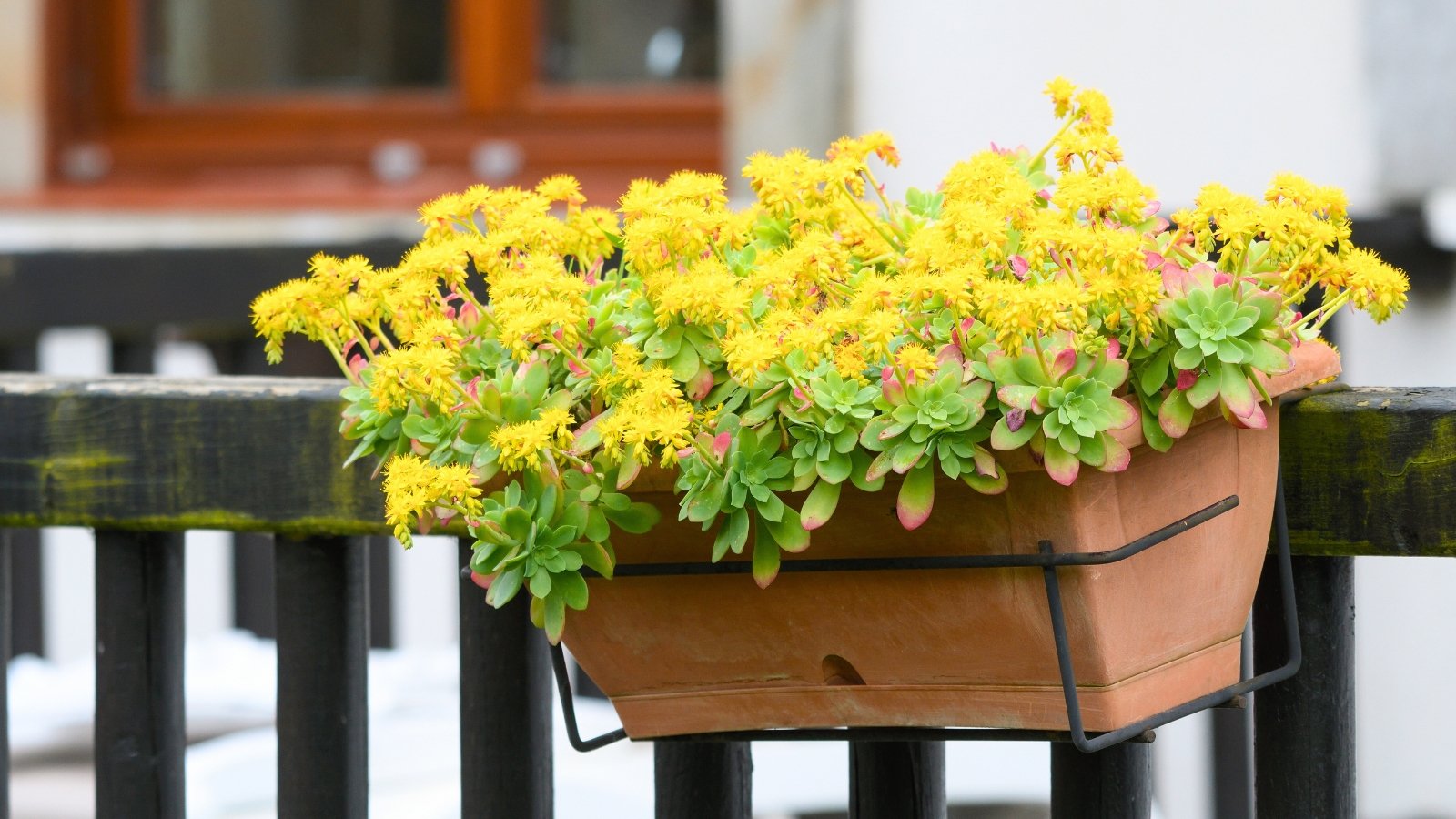 Use sedum in drier areas of the garden.
Use sedum in drier areas of the garden. Sedum, or stonecrop, brings dynamic color and texture in both its foliage and late flowers. The flowerheads transition in tone and yield interesting seeds that persist into the cool season.
Hylotelephium ‘Autumn Joy’ is a favorite with large, pink flower clusters that turn deep rose-red before aging to copper. Silvery green, thick, padded leaves are attractive from spring through heavy frost.
‘Back in Black’ has nearly black foliage and massive flower heads that develop mid-summer. Creamy white petals with deep red centers contrast with the dark leaves in dramatic fashion. Partner sedum with aster, solidago, and ornamental grasses for a textural and colorful complement.
Stonecrop is succulent and drought-tolerant. When using them to refresh fall containers, they rely on well-draining potting mix and pots to thrive. Butterflies visit the late-season flowers, and birds forage on persisting seeds.
Snapdragons
 These beauties make wonderful fall cut flowers.
These beauties make wonderful fall cut flowers. Snapdragons are classic cool-season beauties that grow well in containers and make showy cut flowers. The old garden favorites stun in nostalgic colors like ‘DoubleShot Orange Bicolor’ (large, double deep orange flowers) and ‘Twinny Peach’ (double blooms in pale peach and yellow). With varying heights from tall to short, the stems match any container scale as thriller or filler accents.
Snapdragons and violas offer a full-color display from top to bottom. They’ll blossom even with frost, flowering all winter in mild climates and in fall and spring in cold areas. Add in leafy greens like Swiss chard, lettuce, and parsley for a soft contrast. Snaps are edible, if a little bitter, and make lovely decor for plating.
Ornamental Cabbage
 The textured foliage also adds a pop of color.
The textured foliage also adds a pop of color.Ornamental cabbage is a must-have to refresh fall containers for its vibrant tones and unique form with a rosette of leaves. Depending on your climate, cabbage survives all winter (mild regions) or performs best in fall and early spring (cold zones).
Ornamental cabbage differs from ornamental kale in its rounded leaves that are less frilly and ruffly, but both are excellent for incorporating in cool-season pots. The thick, showy leaves of both ornamental cabbage and kale create textural variety in rosettes of green, creamy white, deep pink, purple, and red.
Leaf color intensifies in cool temperatures, transitioning from green to rich, saturated pigments as summer turns to fall. Pair these with other leafy vegetables, like bright lettuces and Swiss chard, along with seasonal bloomers, for a well-rounded design.


 8 hours ago
3
8 hours ago
3

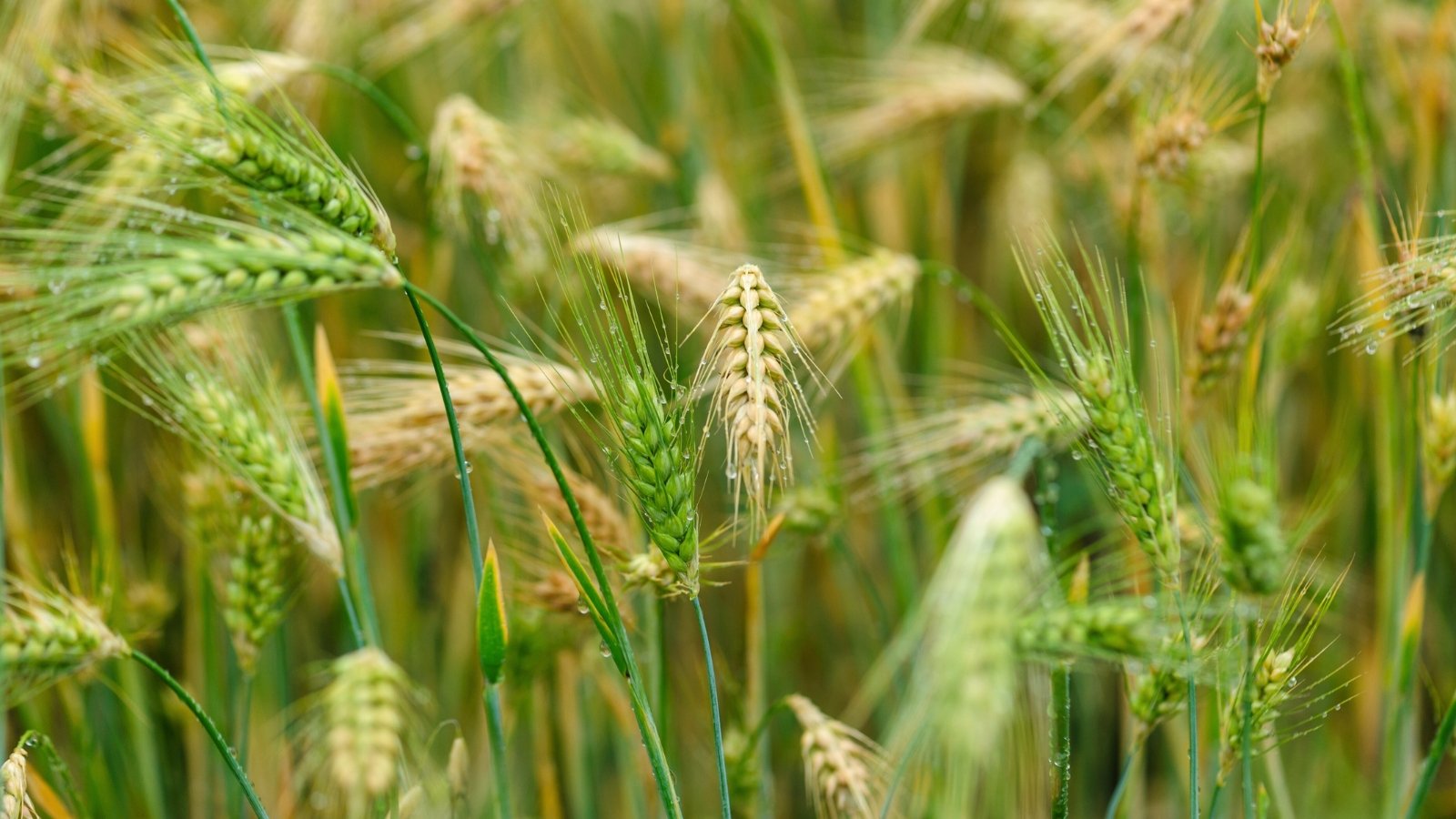
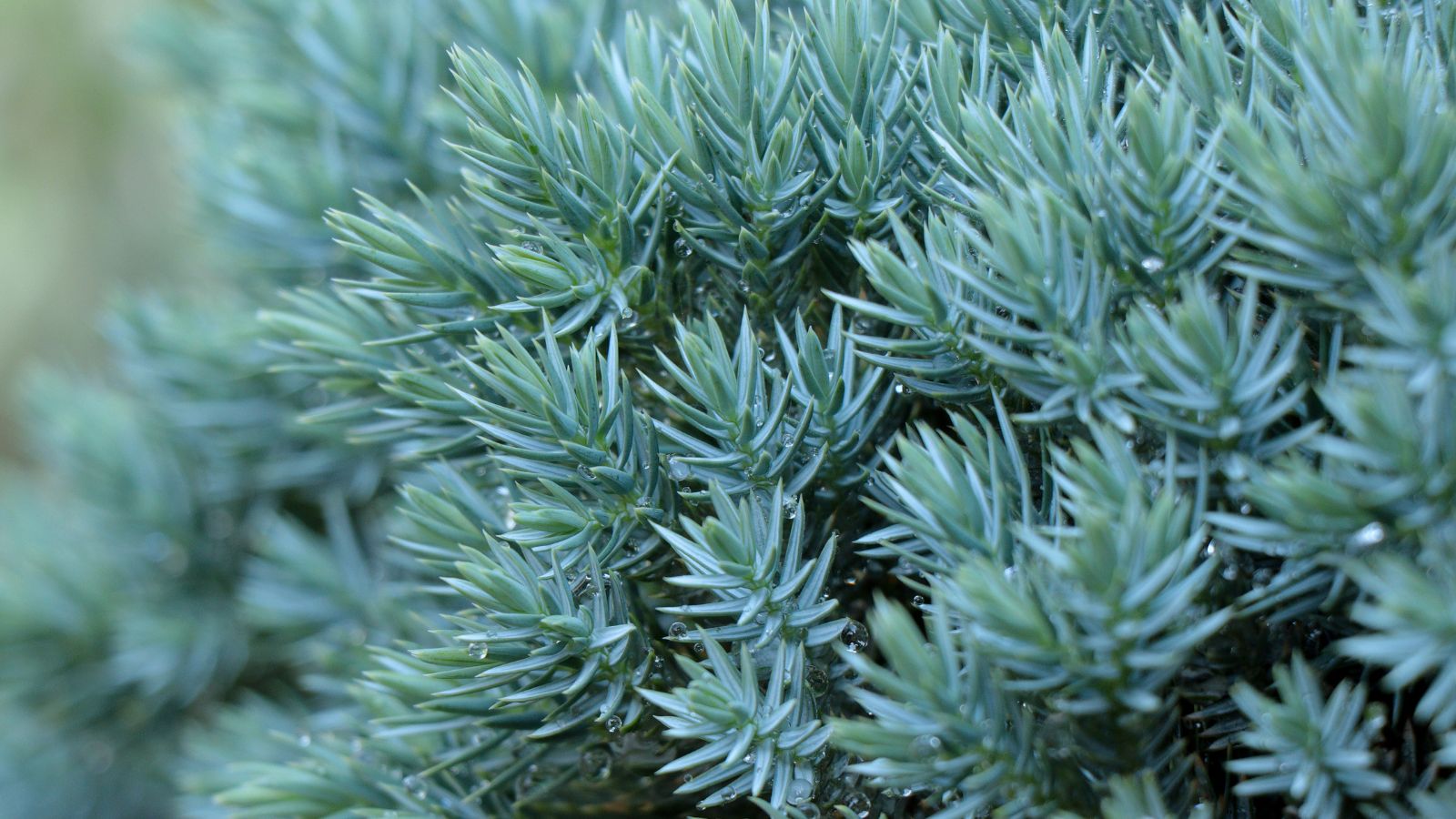
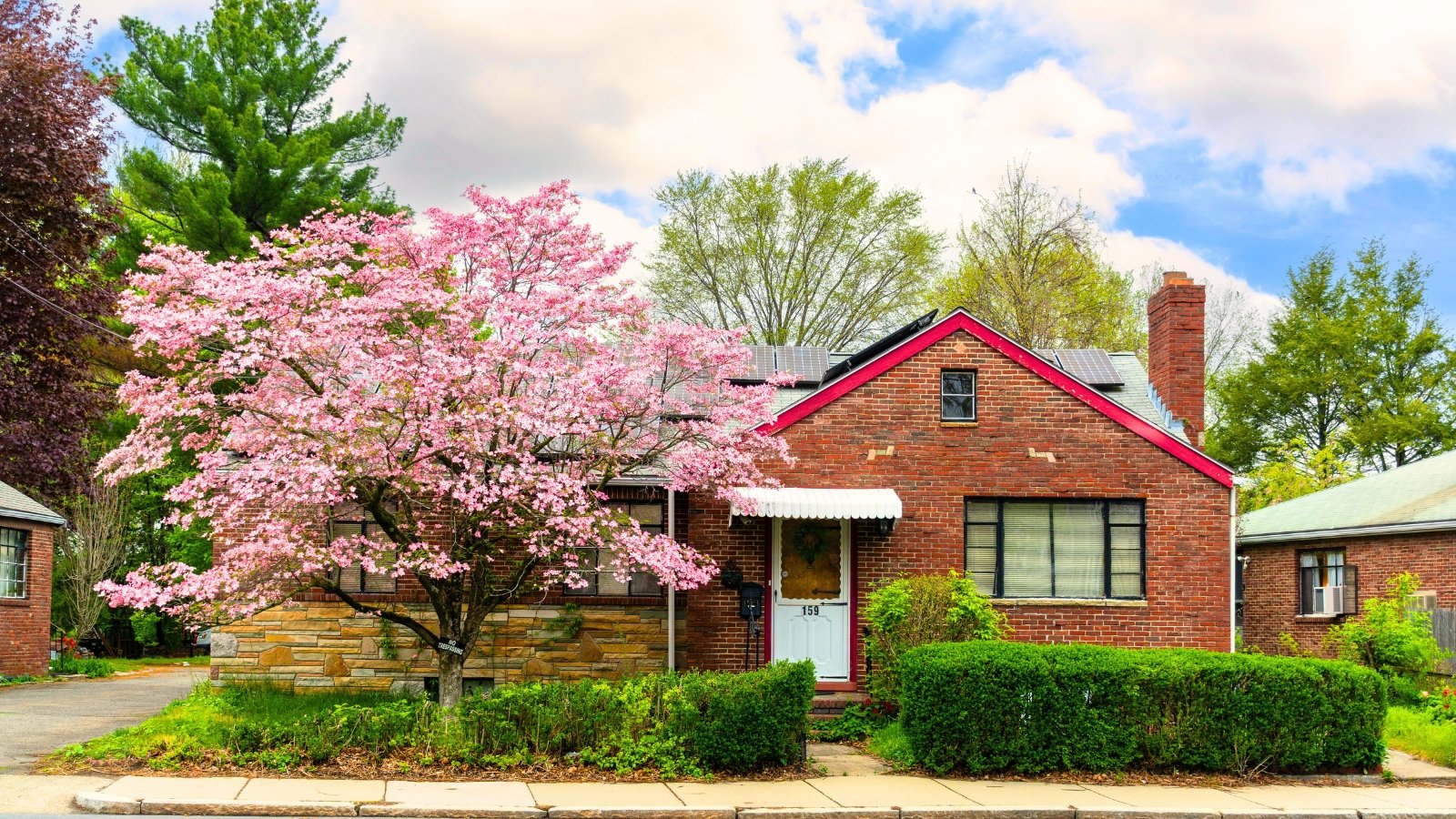
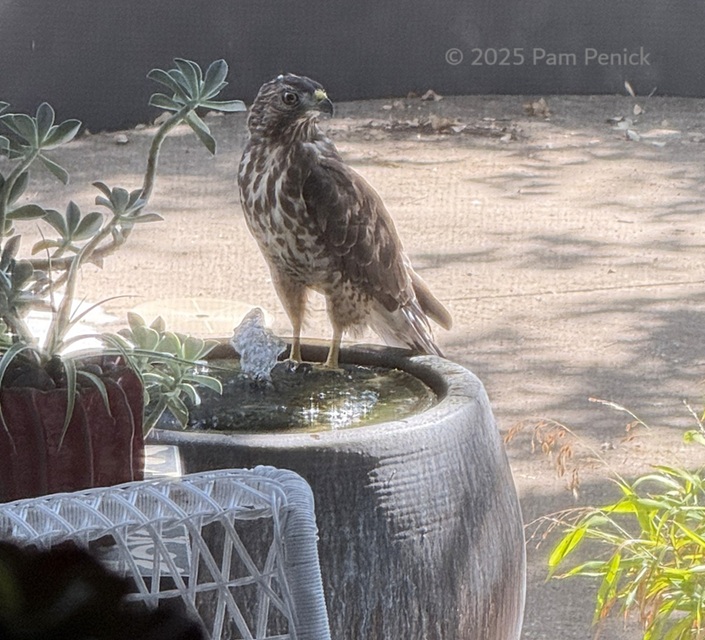
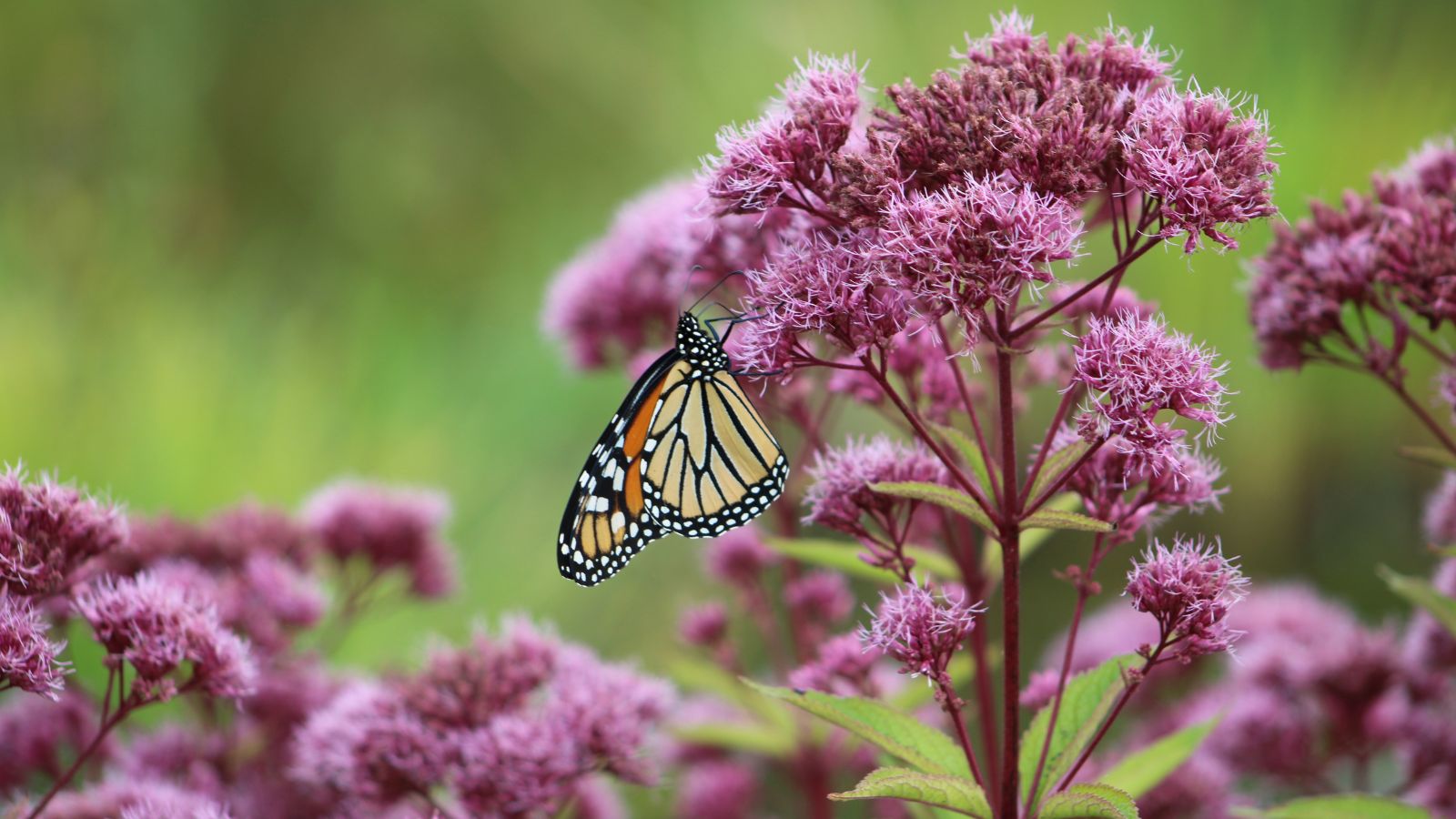















 English (US) ·
English (US) ·  French (CA) ·
French (CA) ·